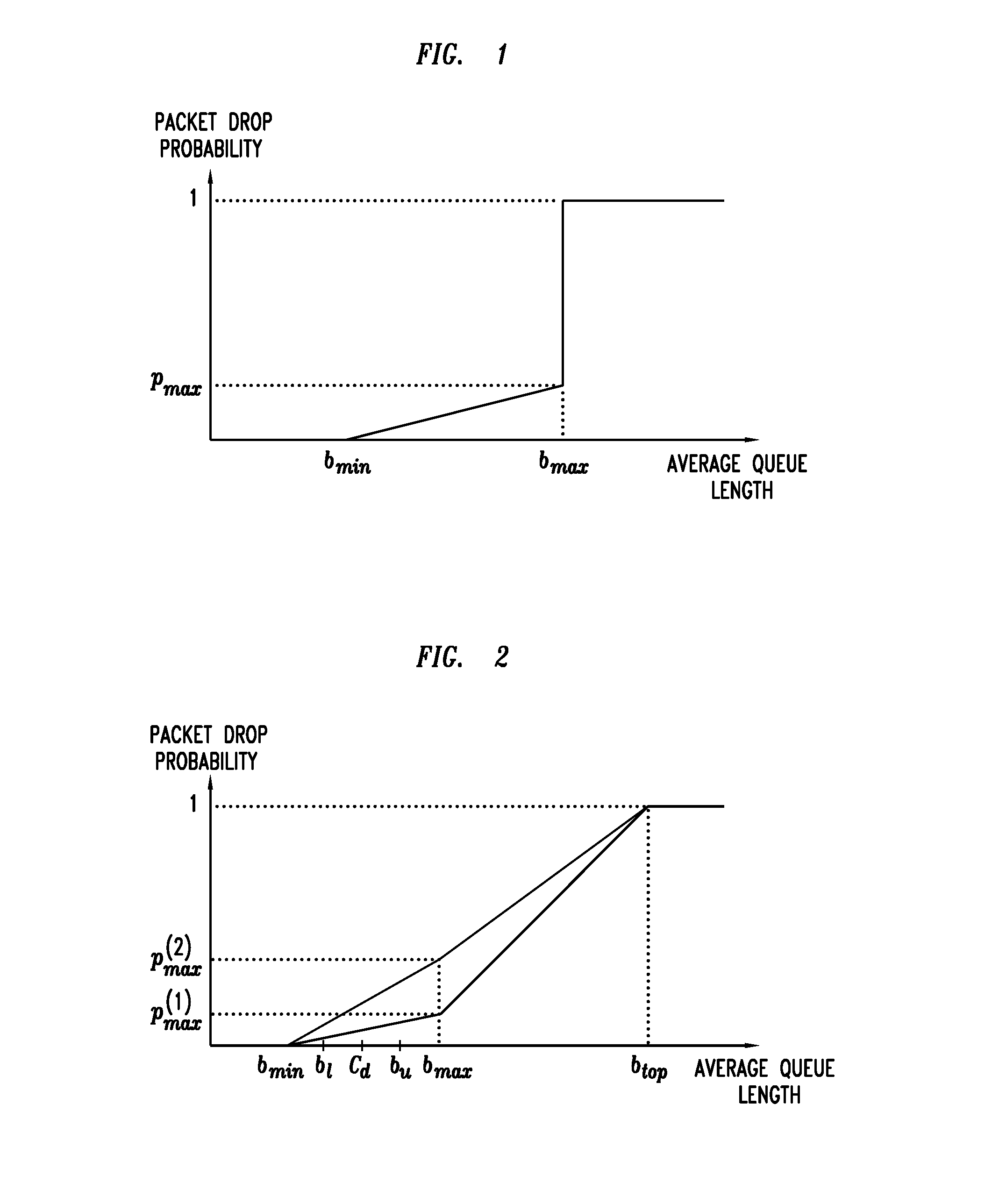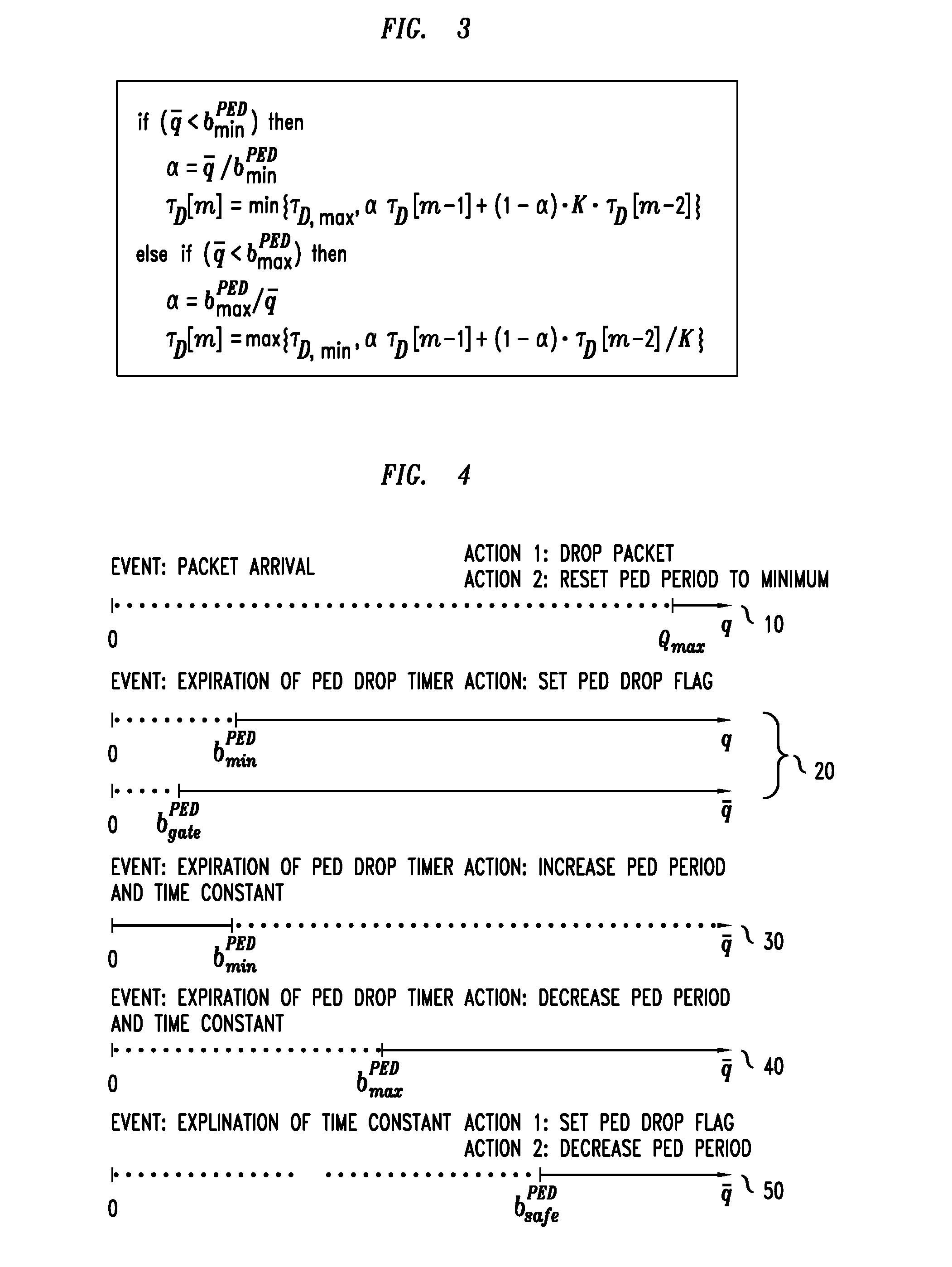System And Method For Implementing Periodic Early Discard In On-Chip Buffer Memories Of Network Elements
a network element and buffer memory technology, applied in the field of communication systems, can solve problems such as inline computation, and achieve the effect of changing the length of the queue over time and stabilizing the length of the queu
- Summary
- Abstract
- Description
- Claims
- Application Information
AI Technical Summary
Benefits of technology
Problems solved by technology
Method used
Image
Examples
Embodiment Construction
[0035]Exemplary embodiments of the invention will now be described while referring to the figures, several of which may be simultaneously referred to during the course of the following description. Before describing the present invention, however, we will continue with some discussion of the prior art as it relates to aspects of the present invention.
[0036]The massive research effort that followed the publication of [Appenzeller, 2004], thoroughly summarized in A. Vishwanath, V. Sivaraman, and M. Thottan, “Perspectives on router buffer sizing: Recent results and open problems,” ACM SIGCOMM Computer Communication Review 39(2):34-39, 2009 [Vishwanath, 2009], did not yield straightforward solutions for extending the results of [Appenzeller, 2004] to more general settings with fewer and possibly synchronized long-lived flows, as in edge and private-network links, and actually led in Y. Ganjali and N. McKeown, “Update on buffer sizing in Internet routers,” ACM SIGCOMM Computer Communicat...
PUM
 Login to View More
Login to View More Abstract
Description
Claims
Application Information
 Login to View More
Login to View More - R&D
- Intellectual Property
- Life Sciences
- Materials
- Tech Scout
- Unparalleled Data Quality
- Higher Quality Content
- 60% Fewer Hallucinations
Browse by: Latest US Patents, China's latest patents, Technical Efficacy Thesaurus, Application Domain, Technology Topic, Popular Technical Reports.
© 2025 PatSnap. All rights reserved.Legal|Privacy policy|Modern Slavery Act Transparency Statement|Sitemap|About US| Contact US: help@patsnap.com



